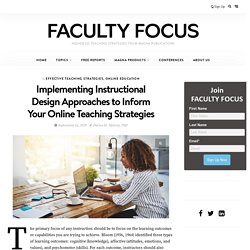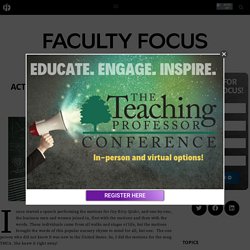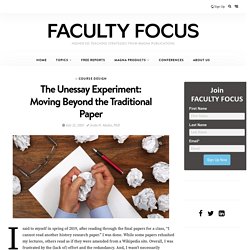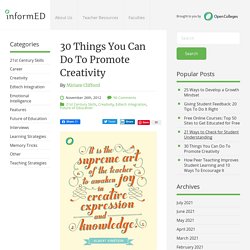Articles
> Tamaranth9
Instructional Design, Instructional Designer, Design, Designer, Instruction, Work, Job
Untitled. Instructors who teach live online classes should thoughtfully consider whether to require students to use their webcams during class.

During the spring 2020 semester, when higher education quickly shifted to remote online teaching in response to the coronavirus pandemic,1 faculty and leadership didn't have much time to think carefully about the many details of teaching online. Now that the spring and summer semesters are behind us and we are facing remote teaching during the fall semester and possibly beyond, some faculty members may question whether to require all students in live online classes to be on webcam all the time. As experienced online educators, our answer is no for four reasons. First is the issue of equity. Online classes with heavy webcam use require faster internet connections and newer computer equipment, and not every student is on equal footing in this regard.
Second, constantly being on webcam can detract from student learning. The Benefits of Using a Webcam Notes. Untitled. How can you make sure your online students take tests without cheating?

It’s one of the most-frequent questions asked by new online instructors and even some experienced ones. The short answer: You can’t.
Untitled. One of the perks of teaching online is that there are so many great tools that make facilitating an online course easier.

Untitled. The primary focus of any instruction should be to focus on the learning outcomes or capabilities you are trying to achieve.

Bloom (1956, 1964) identified three types of learning outcomes: cognitive (knowledge), affective (attitudes, emotions, and values), and psychomotor (skills). For each outcome, instructors should also consider the level of outcome they are trying to achieve. So, if you are teaching cognitive skills, such as mathematics or language, you should determine if you need your students to remember (level 1), understand (level 2), apply (level 3), analyze (level 4), evaluate (level 5), or create (level 6) (Krathwohl, 2002).
Untitled. Instructors often experience problems between the directions given for an assignment and the work submitted by a student.

Students miss important parts of questions; they may fail to understand the directions; and they produce work which the instructor finds unacceptable. Unfortunately, students may fail to see what the instructor sees for the end product, leading to loss of time and learning. John Hattie (2015) found that instructors who directly teach what is expected, have improved student outcomes with a large effect size (Cohen’s d = 0.77). Templating, where instructors explicitly develop, teach, and model expectations, improves learning and reduces time spent trying to implement directions and is rooted in Bandura’s social learning theory by helping students define, interpret, and mimic what was observed (Bandura & Walters, 1977). Min/Max Rules. Untitled. I once started a speech performing the motions for Itsy Bitsy Spider, and one-by-one, the business men and women joined in, first with the motions and then with the words.

These individuals came from all walks and stages of life, but the motions brought the words of this popular nursery rhyme to mind for all, but one. The one person who did not know it was new to the United States.
Untitled. During a recent online class, a student posted in the chat, “We should use breakout groups in all courses.”

On the other hand, a faculty director bemoaned receiving student complaints when, for example, two students are left in breakout rooms for 20 minutes with a task that can be completed in 5-10 minutes. These two comments speak to the promise and peril of breakout room discussions. They have the potential to be meaningful experiences during the synchronous portion of the course. They can also be perceived as a waste of time and fall flat. There are a two main questions faculty members must answer before utilizing breakout groups: 1. Students in an in-person class can seek clarification more easily or ask the common question, “Can you tell us again what we are supposed to be doing?” 2. We have likely all had mixed experiences with small group activities. Creating a Collaborative Document.
Untitled. I said to myself in spring of 2019, after reading through the final papers for a class, “I cannot read another history research paper.”

I was done. While some papers rehashed my lectures, others read as if they were amended from a Wikipedia site. Overall, I was frustrated by the (lack of) effort and the redundancy.
30 Things You Can Do To Promote Creativity. The concept of teaching creativity has been around for quite some time.

Academics such as E. Paul Torrance, dedicated an entire lifetime to the advancement of creativity in education. Torrance faced much opposition in his day about the nature of creativity. Creativity was considered to be an immeasurable, natural ability. Torrance called for explicit teaching of creativity. In recent times, there has been a shift towards the increased acceptance of valuing creativity for all learners. Much of the blame for a lack of creativity, and therefore innovation, can be traced to our traditional educational systems. It relies on teaching to the correct answer. In the same way, David Hughes, founder of Decision Labs and professor at UNC Chapel Hill, argues that innovation is an essential skill for our global economy.
- Critical Thinking Model 1.
To Analyze Thinking We Must Identify and Question its Elemental Structures Standard: Clarityunderstandable, the meaning can be grasped Could you elaborate further?

Could you give me an example? Could you illustrate what you mean?
Unlocking the Mystery of Critical Thinking. Critical thinking.
CERE12-13: Combined student wikis. Deep and Surface Learning: The Literature Tell me, I forget. Show me, I remember. Involve me, I understand. - Confucius What is Below?
EdTechWomxn.
Using Social Media to Retain and Connect with Students in the Shift to Online Education. COVID-19 has upended normal social connections that develop between students and professors. We are missing the connections that develop through casual interactions in office hours, pre-class discussions, post-class questions, and any other in-person interaction. These social connections are important for student retention, academic development, diversity, and inclusion.
As universities and faculty grapple with the shift to an online education system, and as uncertainties and budget concerns about the fall semester take hold, strategies to maintain student-faculty connections should be a top priority. As we thoughtfully shift our courses online, we must also strategically consider how to best replicate or innovate to develop social connections. While maintaining a connection with students should be a university wide initiative, in the short run, faculty can assist by developing their own student connection initiatives.
Instructional Design: Today and Tomorrow. Avoid Burnout Before You’re Already Burned Out. Finally, taking time to move provides another opportunity for our bodies and minds to recalibrate. Even five minutes of outdoor exercise can have a meaningful psychological impact. And better yet, if you can do 20 to 30 minutes of exercise at a time, you can over all improve your mental health.
For example, when something stressful happens to me, I’ll try to go on a walk or a run around the block as soon as possible to get the negative energy out of my body. This not only reduces the negative feelings but also calms my mind so I can focus for the rest of the day. Thinking through difficult situations is important but at a certain point, the only way to release the emotions is to physically let them go.
Every Fall Syllabus Needs an "Or" Option. This post was originally published here on May 23, 2020. By the end of summer, we all will have reinvented our syllabi to account for varying degrees of hybrid teaching.
We will have reimagined the structure of our semesters to make our syllabi and ourselves flexible enough to fit the circumstances, whatever they may be, at our respective campuses this fall. Educators across the world have done a heroic job teaching online and sharing resources in an emergency, and we know that we will do an even better job creating community, recognizing what students need, and assigning manageable workloads from the get-go this time. Why “or” Matters When I introduced the collaborative spirit behind an early American Lit survey course to colleagues — a communal collegiality I cultivated with students to co-create the syllabus — someone noted that my syllabus had a lot of “or” options.
Fostering Fun: Engaging Students with Asynchronous Online Learning. Volume 10 FINAL.doc EJ1074044.










